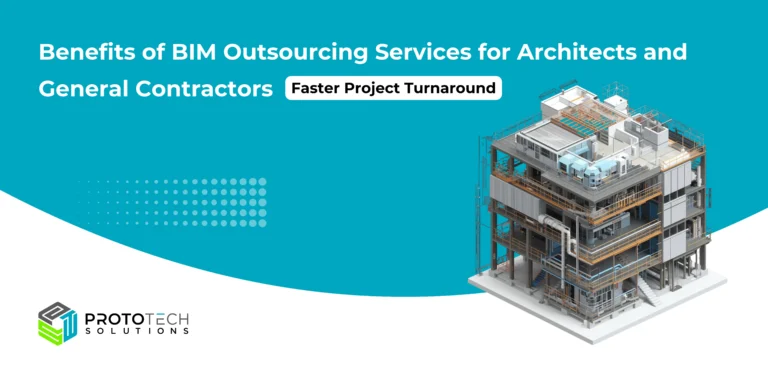How Building Codes Streamline the Approval Process for Real Estate Developers?

Building codes and standards in the U.S. have significantly improved over the last century to better protect people from harm. In the real estate development industry, navigating the approval process is one of developers’ most time-consuming and intricate steps. Between managing design, construction, budgeting, and timelines, developers must also ensure that their projects comply with local, regional, and national regulations. This is where building codes come into play, offering a critical framework that ensures safety and expedites the approval process for developers.
Building codes provide developers with a set of guidelines that help streamline construction and approval. Adhering to these codes ensures that projects meet the minimum safety, health, and environmental standards. Understanding how these regulations work can mean the difference between a smooth approval process and costly delays.
This blog post explores how building codes facilitate the approval process for real estate developers, the benefits they bring, and practical strategies for navigating the complexities of these regulations.
What Are Building Codes?
Building codes are regulations that establish minimum standards for the design and construction of structural systems, fire safety, plumbing, air conditioning (HVAC), natural gas systems, electrical, energy efficiency, zoning, and other components in residential and commercial buildings. In the U.S., these codes are generally governed by state and local authorities.
Rather than creating new codes from scratch, most lawmakers and officials begin with a standardized language known as model codes. These serve as a foundation that can be adjusted to fit the specific needs of a state, county, or city.
Model codes, developed primarily by the nonprofit International Code Council (ICC), are designed to protect occupants from hazardous conditions. They outline fire safety, evacuation protocols, and the structural resilience required to withstand wind, rain, hail, and other environmental threats. These codes also incorporate consensus-based standards from industry professionals with expertise in relevant fields.
Organizations like ASTM International, the National Fire Protection Association (NFPA), and the American Society of Civil Engineers (ASCE) are among the key standards bodies frequently cited in model codes. These groups provide widely recognized guidelines that help shape the technical and safety standards incorporated into building regulations.
Purpose of Building Codes
The primary purpose of building codes is to protect the public by ensuring that buildings are safe and habitable. They also aim to:
- Standardized Construction Practices: By providing uniform standards, building codes help ensure that all construction projects meet minimum safety requirements.
- Facilitate Zoning Compliance: Building codes often work in tandem with zoning laws to ensure that developments align with community planning goals.
- Promote Sustainability: Many modern building codes include provisions for energy efficiency and sustainable practices.
The Role of Building Codes in the Approval Process
The real estate development process typically involves several stages: feasibility analysis, design, permitting, construction, and post-construction. Each stage requires various approvals from local authorities. Here’s how building codes streamline this process:
1. Pre-Construction Approvals:
- Developers must obtain a series of approvals before construction begins. This includes zoning approvals, land use permits, and environmental clearances.
- Building codes provide a framework for these approvals by clearly outlining what is permissible in terms of design and construction methods.
2. Construction Approvals:
- During the construction phase, developers must comply with building codes to ensure that their projects meet safety standards.
- Regular inspections by local authorities help verify compliance with these codes, which can expedite the approval process as issues are identified early.
3. Post-Construction Approvals:
- After construction is complete, developers must obtain completion certificates and occupancy permits.
- Building codes facilitate this process by providing clear criteria for what constitutes a safe and compliant building.
How Building Codes Simplify Communication with Authorities
Another way building codes streamline the approval process is by simplifying communication between developers and authorities. Building codes are typically written in a standardized language that both developers and government officials understand. This common language reduces misunderstandings and makes it easier for both parties to navigate the approval process.
1. Clarity in Documentation
One of the primary challenges developers face during the approval process is providing clear and accurate documentation. When building plans are aligned with local building codes, the required documentation is much easier to compile.
2. Standardized Review Process
When a project adheres to established building codes, it can be reviewed more efficiently by local authorities. Since the codes provide a clear framework for what is acceptable, officials can quickly assess whether a project complies with regulations.
Conclusion
Building codes play an essential role in streamlining the approval process for real estate developers by providing clear guidelines that enhance efficiency and reduce risks associated with non-compliance. By understanding these regulations and implementing strategic approaches to navigate them effectively, developers can accelerate their projects while ensuring high-quality outcomes that benefit both their investments and the communities they serve.
When it comes to complying with international building regulations and standards, ProtoTech Solutions is your trusted partner for BIM and CAD services. With 19+ years of expertise in the industry, we understand the critical importance of adhering to global standards in design, drafting, and project workflows. Whether your project involves BIM modeling, CAD design, or drafting, our team ensures that all deliverables meet the highest regulatory requirements.
At ProtoTech, we take pride in offering tailored solutions that align with international codes like ISO, ASME, and other regional regulations. Our expert team uses cutting-edge tools such as AutoCAD, Revit, and Civil 3D to deliver precise and accurate designs, all while maintaining compliance with safety and quality standards. Learn more, connect with our CAD experts.






